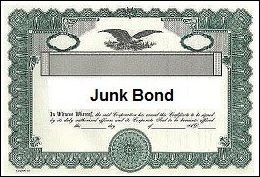 Sweet Briar College had many problems, most notably a high tuition and shrinking enrollment, but the kiss of death was a high debt load. The small women’s college, which announced its intention to close earlier this year, had issued millions of dollars in bonds to pay for such projects as a Village Green that provided eco-friendly residential facilities. The announced closure of the college may have been accelerated by a potential default on $25 million in two outstanding bond issues, reports the News & Advance.
Sweet Briar College had many problems, most notably a high tuition and shrinking enrollment, but the kiss of death was a high debt load. The small women’s college, which announced its intention to close earlier this year, had issued millions of dollars in bonds to pay for such projects as a Village Green that provided eco-friendly residential facilities. The announced closure of the college may have been accelerated by a potential default on $25 million in two outstanding bond issues, reports the News & Advance.
The warning bells had been sounding for more than ten years. But in 20o8 the board of directors approved an $11 million bond issue to build the $3 million Village Green as well as a new fitness and athletics center.
Last November, S&P revised its outlook on the BBB rating of the college’s 2006 bond issue from stable to negative. “The negative outlook was a result of numerous factors, including Sweet Briar’s enrollment challenges and high tuition discount rate,” wrote reporter Sherese Gore. “S&P warned of a potential lowering of its rating on the 2006 bonds during the two-year outlook period if there were further declines in enrollment and increased operating deficits.”
Bacon’s bottom line: The big question that bond rating agencies are asking about college finances these days is how well are student enrollments holding up? For most colleges and universities, tuition and fees paid by students is the dominant source of revenue. The cost has gotten so high that many families are balking, and enrollments are eroding at many institutions. The loss of revenue is all the more acute for colleges that have loaded up on debt. The obligation to hold debt obligations sacrosanct accentuates budget cuts to programs. If the quality of education or the residential experience is compromised, colleges run the risk of further enrollment declines, setting off a vicious cycle.
The United States hasn’t appeared to have learned anything from the 2007 real estate crash, which was driven by excessive indebtedness. Federal government borrowing has reached record levels, both in absolute numbers and as a percentage of the GDP. Exploiting near-zero interest rates, businesses are leveraging their balance sheets, taking on debt to increase their return-on-equity numbers while using cash flow to purchase shares. Even households, chastened by the recession and real estate crash, are beginning to take on more debt, although they haven’t matched the excesses of the 2000s. Scarily, China, Japan, France, Spain, Italy and other major economies have been every bit as undisciplined as the U.S. There will be a global debt reckoning.
There is no way of knowing when that day will come. But when it does, the fear-of-debt contagion will spread with frightening rapidity as confidence unravels, transmitted through the international economy in ways that no one today can predict. Survivors of the shake-out will be those who maintain tight financial discipline. For those of us concerned about public policy, that means paying close attention to the finances of state and local governments, industrial development authorities and colleges and universities.
— JAB


